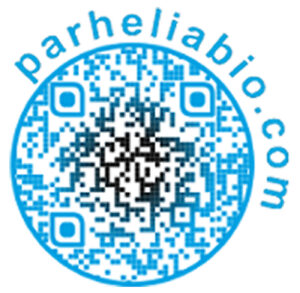Sponsored content brought to you by
Tumor microenvironment is a complex assembly of cancer cells, immune cells, stromal cells, and extracellular matrix components. Interactions between these components can significantly impact tumor growth and response to treatment. A certain breakthrough in our ability to map tumor microenvironments came with the advent of spatial biology era, where various highly multiplexed imaging techniques are now used to map dozens of cell types in situ and sophisticated computational algorithms are used to quantitatively model their relationships in the tumor context. These multi step protocols are very expensive, subject to severe sample throughput limitations, prone to assay variation and are difficult to adopt and standardize across multiple labs.
Parhelia’s vision is to usher in the coming of a new era of Reproducible Biology whereby research compliance, reproducibility and robustness are achieved by implementation of accountable automation at the level of an individual bench. In this vision, protocols will be shared between labs not through individual training and painstaking trial-and-error reverse engineering, but rather by sharing downloadable open-source automation scripts that can be deployed at a push of a button. Forcing the researchers to translate the often implicit knowledge of nitty-gritty details of complex protocols into exact and explicit robotic commands will enable rapid dissemination, easy adoption, versioning and independent validation of new protocols by the community of peers.
To help bring about this future and address the mounting challenges in spatial biology research, Parhelia Biosciences created Omni-Stainer™, a game-changing tissue staining workstation capable of seamless deployment of a plethora of spatial assays. Unlike the bulky histology autostainers of the past, Parhelia Omni-Stainer™ is a compact benchtop device that is intentionally priced well within the CapEx budget limits of medium-size research labs (<$15k).
Parhelia Omni-Stainer is a modular instrument built on a chassis of an open-source SBS-format liquid handler. Modules are designed to accommodate various tissue staining formats, including regular slide-mounted samples as well as more exotic coverslip-mounted samples that are increasingly utilized in spatial assays such as CODEX or smRNA-FISH.

Each module hosts up to 12 samples in parallel and the Omni-Stainer can be fitted with up to 10 such modules, allowing for a maximum throughput of 120 samples per run. Omni-Stainer modules can be fitted with programmatically controlled Peltier blocks, allowing for precise temperature control in the 0-99C range. This allows temperature-controlled assays to be deployed on Parhelia Omni-Stainer, including ISH protocols, DNA ligation and amplification, cyclic IF and TSA assays such as Opal.
Efficient and uniform sample staining is attained via capillary gap exchange, which is the key feature of Omni-Stainer. Samples are incubated in 60um thin capillary layer of liquid, which dramatically reduces the use of expensive reagents such as DNA-antibody conjugates or FISH probes.
The unmatched flexibility of Parhelia Omni-Stainer allows creation of arbitrary complex protocols via a simple Python API. Additionally, Parhelia provides its users with access to StainWorks, a powerful web app that contains a shared repository of validated protocols and allows users to modify and run those protocols without having to touch any code. Currently, StainWorks contains validated protocols for IF, IHC, CODEX (PhenoCycler), IMC, Opal and RNAScope, and the list is constantly expanding.
Parhelia Omni-Stainer has already been deployed at leading research institutions, including Stanford, Harvard, Broad, MD Anderson, Mayo Clinic, WUSTL, as well as pharma R&D, including Novartis and Genentech.
In summary, Parhelia Omni-Stainer is a powerful tool for spatial biology researchers, freeing them up from the ruts of repetitive tissue staining runs, cutting down on expensive reagent usage and providing unmatched quality and reproducibility of tissue staining at a push of a button.

To learn more, visit www.parheliabio.com

